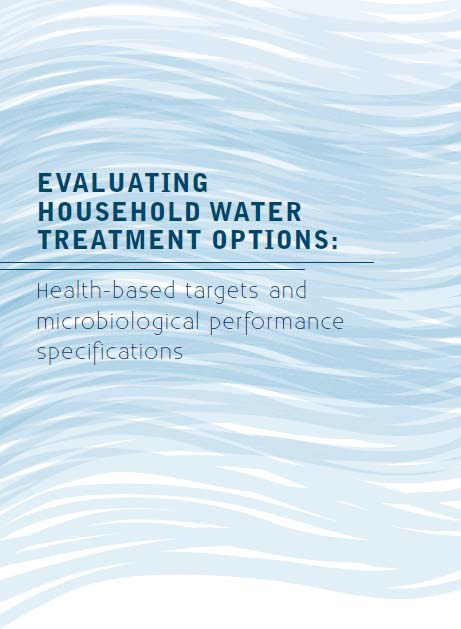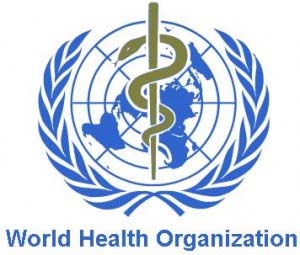/topics/health
Health
Guidelines of the Central Rural Sanitation Programme and Total Sanitation Campaign by the Department of Drinking Water and Sanitation (2011)
Posted on 25 Jul, 2011 07:30 PMThis document by the Department of Drinking Water and Sanitation deals with the guidelines of the Central Rural Sanitation Programme (CRSP) and Total Sanitation Campaign (TSC). India’s first nationwide programme of rural sanitation, the CRSP was launched in 1986, while TSC was launched in 1999 with the aim of ending open defecation.
Assessing variability of water quality in a groundwater-fed perennial lake of Kashmir Himalayas using linear geostatistics – A paper in Journal of Earth System Science
Posted on 17 Jul, 2011 08:47 PMThe study of the hydrochemistry of the Manasbal lake was done to find out whether the lake water was fit for drinking, irrigation and other purposes.
Evaluating household water treatment options
Posted on 17 Jul, 2011 02:11 PM This document by the World Health Organisation, for the first time, sets forth global criteria to evaluate whether a household water treatment option reduces waterborne pathogens sufficiently to protect health. Through use of a risk-based framework and by emphasizing the philosophy of incremental improvement, it is intended to provide implementers and policy-makers with an evidence-based and pragmatic approach to select options suited to local conditions.
This document by the World Health Organisation, for the first time, sets forth global criteria to evaluate whether a household water treatment option reduces waterborne pathogens sufficiently to protect health. Through use of a risk-based framework and by emphasizing the philosophy of incremental improvement, it is intended to provide implementers and policy-makers with an evidence-based and pragmatic approach to select options suited to local conditions.
Household water treatment interventions may play an important role in protecting public health where existing water sources, including those delivered via a piped network or other improved sources, are untreated, are not treated properly or become contaminated during distribution or storage. Household water treatment applications are a range of technologies, devices or methods employed for the purposes of treating water at the household level or at the point of use in other settings, such as schools, health-care facilities and other community locations. Point-of-use water treatment is another term used for household water treatment.
Guidelines for drinking water quality - Fourth edition by World Health Organisation (2011)
Posted on 09 Jul, 2011 10:41 AM This integrates the third edition, which was published in 2004, with both the first addendum to the third edition, published in 2006, and the second addendum to the third edition, published in 2008. It supersedes previous editions of the Guidelines and previous International Standards.
This integrates the third edition, which was published in 2004, with both the first addendum to the third edition, published in 2006, and the second addendum to the third edition, published in 2008. It supersedes previous editions of the Guidelines and previous International Standards.
This edition of the Guidelines further develops concepts, approaches and information introduced in previous editions, including the comprehensive preventive risk management approach for ensuring drinking-water quality.
IAG Odisha calls for a study on Cholera/Diarrhoea outbreak in Odisha – Apply by July 15, 2011
Posted on 23 Jun, 2011 12:42 PMThe Orissa Inter Agency Group (IAG) is a consortium of 21 humanitarian organizations actively involved in humanitarian responses in the state of Odisha. Besides coordinating and collaborating with the member organisations, the state government and other agencies with similar mandate it also provides quality assistance to people affected by disasters.
‘Public spending and its effectiveness: Selected studies from Karnataka’ - One day seminar on health, education, water and local self-government, CBPS, 25th June, 2011, Bangalore
Posted on 13 Jun, 2011 02:09 PM Organizer: Centre for Budget and Policy Studies (CBPS)
Organizer: Centre for Budget and Policy Studies (CBPS)
Venue: White House, The Hotel Capitol, Raj bhavan Road, Bangalore
Topics:
- Health
- Education
- Drinking water
- Decentralisation
Study of water supply & sanitation practices in India using geographic information systems - Some design & other considerations in a village setting - IJMR research paper
Posted on 06 Jun, 2011 05:01 PMThe study attempted to understand the phenomenon of water contamination in the village by using GIS as a tool to locate and map water supply and sewage distribution systems in the village, in relation to human and animal dwellings, their wastes, sanitary practices and their connections with drinking water quality for a clearer understanding of the connections between these factors and possible
The Delhi superbug debate - A mirror reflecting our own inadequacies?
Posted on 23 Apr, 2011 07:12 PMEven with its questionable merit, the superbug study has identified the need for us to question the focus that we have on finding narrow solutions to health issues .It has also highlighted the urgent need to address the broader infrastructural needs of the country such as access to safe drinking water and sanitation
Image source: Wikimedia Commons
The superbug study
New Delhi and the world was hit by panic last week because of a recent study published in the journal The Lancet Infectious Diseases , which found a high level of water contamination acquired from drains and public taps across India's capital city. The water was allegedly contaminated with superbugs, or what has been referred to as bacteria carrying the NDM 1 gene. Four percent of drinking water samples (2 of 50 samples) and 30 percent of drain samples (51 out of 171 samples) were found to be contaminated with superbugs [1, 2].
Groundwater: From mystery to management - An article by TN Narasimhan
Posted on 22 Apr, 2011 12:07 PMGroundwater has been used for domestic and irrigation needs from time immemorial. It is a component of the hydrological cycle, vital for human sustenance. Unlike surface water, groundwater cannot be readily observed. Consequently, it was long considered to be mysterious or even occult in nature, influencing legal decisions relating to groundwater ownership and use.
Water safety plan: A manual for pilot study areas of Hyderabad
Posted on 20 Apr, 2011 02:03 AMThe most effective means of consistently ensuring the safety of drinking water supply is through the use of a comprehensive risk assessment and management approach, that encompasses all steps in water supply from catchment to consumer. Such approaches are called Water Safety Plans (WSPs).
The aim of a WSP is to organize and systematize records of management practices applied to drinking water and to ensure workability of such practices to organized drinking water supply.





